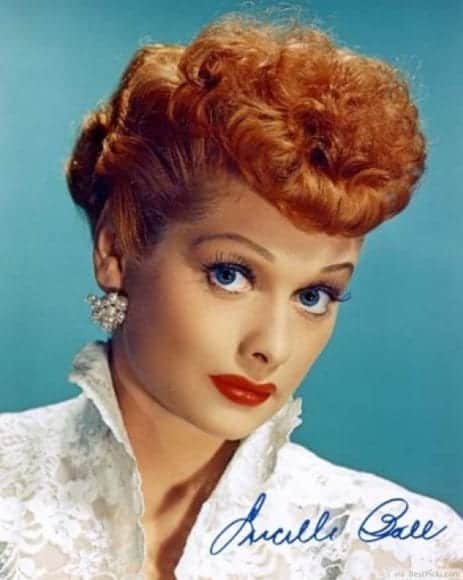Here, in a fascinating article on popular 1950s hairstyles, Jennifer Scott of Beautifully Alive does a fabulous job laying out what inspired the trends of the time, and what kept them alive as the decade aged.
She begins by explaining how the events and trends from the previous few decades influenced hairstyles in the fifties. This history is key to understanding how and why particular looks became so popular back then, and even remain so today.
Jennifer also shares her expertise and tells us how to recreate some of the most iconic styles of the mid-20th century.
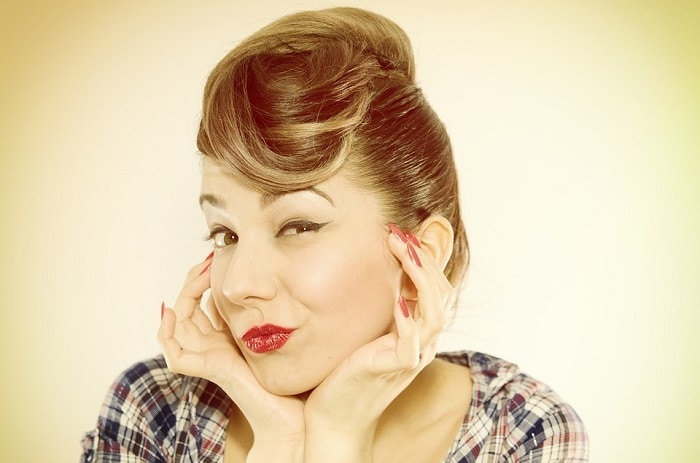
The 1950s was a time of glamour and fun. The second world war was over. American industry was thriving. People had more leisure time and more disposable income than ever. Peace and prosperity ushered in a new era of pop culture icons and fashion fads, including numerous iconic hairstyles for men and women. Chief among these were the pin-up styles. But to understand how revolutionary these 1950s
Hair Styles of the Early and Mid 20th Century
Every decade of the twentieth century saw a few hairstyles that would come to represent it. But these styles didn’t happen in a vacuum. Cultural and social forces played a large role. These forces influenced not only hairstyles, but clothing, makeup, and other fashion trends.
The 1920s
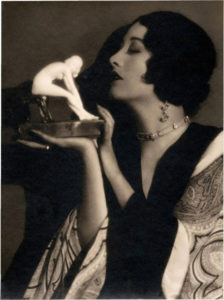
Like the 1950s, the 1920s were a time of postwar trauma in reacting to the senselessness of World War One. Both civilians and veterans alike were shocked at the violence and carnage brought upon by the new ways of waging war and sought a new way to express themselves out of the wreckage of the old order.
Young people sought to throw off the social constraints that had bound earlier generations that in their minds thought responsible for World War One.
Women began to flex their power and economic freedom through masculine styles that included boxy-cut short dresses and short hair. The sleek bob became the signature women’s hairstyle of the 1920s.
Young men abandoned hats, opting instead for slightly longer hair, center-parted and slicked back. These trends crossed racial lines as well, with young African American men and women using various products and treatments to achieve the sophisticated Harlem Renaissance look.
The 1930s
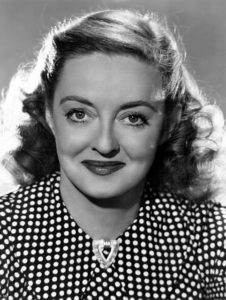
The 1930s were a time of uncertainty and economic depression. During the Great Depression, many lost their homes and their livelihoods as new forms of mass media became widely used like the radio and movies. Entertainment began to trend toward uplifting stories and provided an escapist fantasy for the financially fraught lives of many Americans.
Likewise, fashions — and gender roles — became more idealized. For women, this meant more feminine hairstyles. Waves replaced the sharp, geometric shapes of the roaring, jazz filled 1920s, and as the 1930’s rolled onward, longer hair began prevail over the (at the time) shocking and experimental hairstyles of flapper girls.
As for men’s hair, sharp, clean, short cuts were the order of the day. Hairstyles for African American women included a variety of curls and waves, including finger curls, water waves, and brush curling.
The 1940s
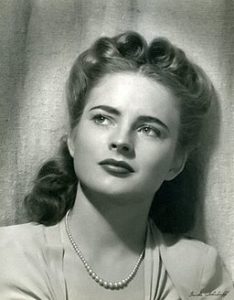
The 1940s brought another war, and with it, hard work, rationing, and new workplace roles for women. Shampoos and hair products became scarce, so people came up with new ways to make do. Hats and turbans became popular as a way to cover up hair that had gone too long between washing and treatments. Patriotically themed styles also became popular, particularly Victory Rolls. Rolling the ends of the hair not only made a fashion statement but kept hair in place for women’s new workplace roles.
Also at this time, the emphasis on feminine beauty shifted to the face. As a result, many of the hairstyles of this era pinned hair up and away from the face to emphasize it. Curls and volume were also the fashion — no more sleek, flat bobs. Shoulder length hair was the most popular for women.
As for men, the fashion was slick, parted, and waved. Men were to be as perfectly groomed as women, and, consequently spent plenty of time in the barber’s chair. Interestingly, height played an important role in men’s hair of this era. At the beginning of the 1940s, the fashion was for a low, short cut. By the end of the decade, high pompadours and waves were coming into their own.
The 1950s
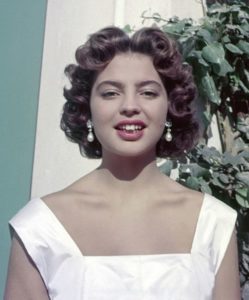
As life settled back down following the end of the second world war, fashions changed. Women returned from the workplace, not always willingly. Gender roles became more pronounced, in fashion as well as in other areas of life. An economic boom softened the blow of these changes. People had more free time, more money, and more things to spend their money on. Women’s fashions emphasized femininity, luxury, and glamour. Both sexes shared an element of rebellion against somber wartime fashions, and a new sense of fun.
As far as hair was concerned, women’s styles could be long, medium or short. However, tidiness and sophistication were necessities. For long hair, twists, high styles, and curls were the order of the day. Short hair was pinned and curled at the ends. Men’s hair also saw some radical new styles, including the long “duck tail” and the high pompadour.
In 1954, the world saw the advent of the first chemical relaxer for African American hair. A whole raft of new straight styles for both men and women followed.
Fabulous 1950s Hairstyles

We’re here to talk about the fabulous fifties, right? There are a number of hairstyles that typify fifties fashion. Cuts for both men and women started out short and compact at the beginning of the decade, and gradually became longer and higher. Neatness and elegance were the watchwords, but always with an element of fun.
General Trends
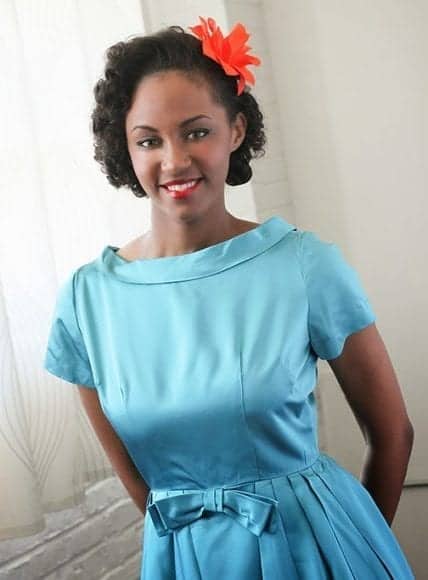
Several trends defined the 1950s hairstyle. First, both medium and short hair for men, as well as women, favored longer locks on top, with shorter sides. Also, different kinds of curls and waves were very much the thing, as well as inventive ways to create them. Bangs reached peak popularity, and the fifties saw numerous different styles that are still with us today. Finally, the market for various products and processes exploded, bringing us one-step color, straighteners, new kinds of permanent waves, and more. It was a new,
High and Tight
Both women and men enjoyed short hairstyles, and for both, “short on the sides, longer on top” was the fashion. For women, especially, this style drew attention to a long, graceful, feminine neck, and made it easy to show off attention-grabbing earrings and necklaces. It also emphasized the youthful, fun-loving vibe of the era. For men, it was a way to look smart and sharp.
Curls, Waves, and Wings
Following the trend of the 1940s, which emphasized the face, curls, waves, and wings continued to take off in the 1950s. As the postwar economic boom of World War Two followed, American began to reap the benefits as the standard of living was raised almost across the board. Newer technologies were introduced to the public and soon the postwar optimism began to seep into pop culture.

Long, curly, and voluminous hair began appearing in Hollywood movies and
Curls and waves were popular with all hair lengths. Women embellished their short styles with pin curls on the side or a couple of carefully placed “kiss curls” in the front.
Perms gave body, wave, and texture to short hair. Women also used rollers and different products to set their hair overnight. Larger rollers helped to create soft, rolling waves, such as in the popular, medium-length pageboy style.
Bangs
Bangs were definitely on trend in the fabulous fifties. Whether long, short, rounded, or wispy, it’s hard to go wrong with this classic vintage look.
Rockabilly Bumper Bangs
Bumper bangs actually made their first appearance in the 1940s, but they continued to be popular in the 1950s. Today, bumper bangs are a hallmark of the rockabilly revival fashion trend.
Bumper bangs lay straight across the forehead, a little higher above the brow-line than usual, and rounded like the bumper of a car. You can easily achieve this look by rolling long hair over a roller, form, or “rat” across your forehead. This video can show you how.
Peek-a-Boo Bangs
Bangs were another way to add individuality and character to a short hairstyle. “Peek-a-boo” bangs were, as you might guess, long enough to hang down into the eyes, so that a person could coyly look out through them.
1950s Hairstyles for Short Hair
The Italian Cut
The Italian cut was first popularized by Italian film stars Gina Lollobrigida and Sophia Loren. Following the trend of neat and tidy, this short style featured carefully created all-over waves and sculptured curls. It, too, was long on top and short on the bottom.
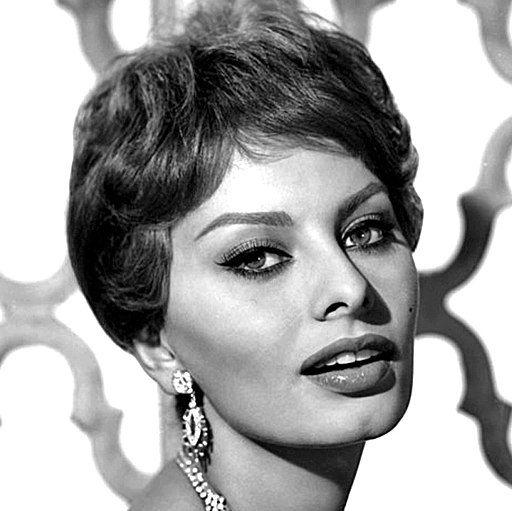
Several of today’s favorite celebs have tried variations on the Italian cut, including Audrey Tatou and — yes! — Michelle Obama!
The Pixie Cut
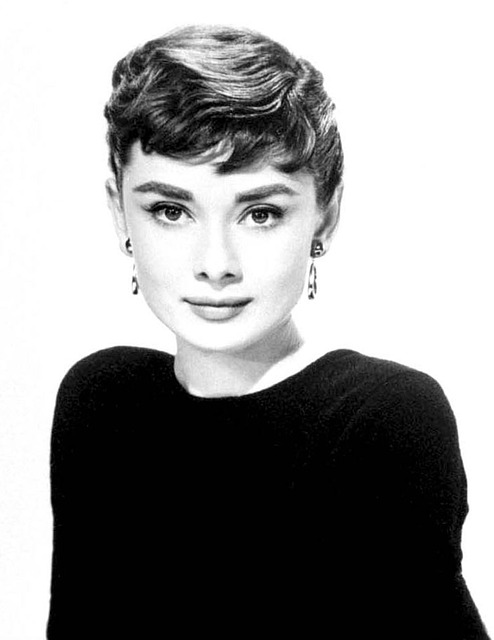
Audrey Hepburn is probably the most famous example of the elfin Pixie cut. The pixie cut is very short, but, true to the era, longer on top. This cut became popular following Hepburn’s film Roman Holiday, in which her character chopped off her locks as a mark of independence.
That being said, the hairstyle was also seen later to be worn by actress Mia Farrow and the British supermodel Twiggy in the 1960s
Since then the pixie cut has been relatively popular hairstyle for women, from the 1970s all the way until today, the hairstyle has never really fallen out of favor with woman across time.
Some of today’s stars who have rocked a pixie cut include Katie Perry, Janelle Monae, and Tais Araujo.
1950s Hairstyles for Medium-Length Hair
Medium and long haircuts of the 1950s followed the trend of elegant and neat. Some styles favored waves, while others were smooth and sleek.
The Pageboy
The pageboy is a medium-length cut with bangs, generally worn smooth, with the ends rolled under. Women parted their hair in the middle, or low on one side, in order to make a dramatic swoop pinned back with a decorative clip. It’s a very versatile style that you can tweak to be either practical or elegant. Grace Kelly and Marilyn Monroe wore a pageboy from time to time. More recently, Taylor Swift rocked a modern pageboy.
1950s Hairstyles for Long Hair
The Gibson Roll
The Gibson roll, as the name suggests, originated much earlier than the 1950s. Rolling the hair in this way actually started in the 1890s, with the glamorous Gibson Girl. Its popularity peaked again in the 1940s, as it was an easy way to keep hair tidy and out of the way in the workplace. In the 1950s, the Gibson roll continued to be popular for its stylishness and elegance.
It’s easy to tuck your hair back into a Gibson roll, using a “rat,” or a roll made out of net. These are inexpensive and easy to find in the haircare section of most drug stores. This video will show you how to create this classic look.
Victory Rolls
Victory rolls, too, are a product of an earlier age. The patriotic name may give you a clue. Yes, these began in the 1940s, as an inexpensive, easy way to add a little flair and fun when hair products were in short supply. But cute and easy victory rolls remained popular. You don’t need any special tools to create them — just hairpins and, maybe, a bit of styling lotion or gel. You can place them on the sides of your head, over the forehead, and more.
If you are short on hair products yourself, why not try our homemade coconut conditioner, or maybe the anti-frizz treatment I make at home and use myself?
This video will show you several different techniques for creating this fun period look.
The Beehive
The high, sprayed-to-helmet-hardness beehive is an iconic style that began at the end of the decade. This style is a little more challenging to create. First, you have to tease or backcomb the hair in back and on the crown, in order to give your beehive height. Then you sweep the remaining hair around it to make it appear smooth. You can leave the hair in the back hanging free or twist it up into a chignon.
This video can teach you how to create beehive hair at home.
The Bouffant
The bouffant is another late-1950s style that relies on teasing to give volume. It was first popularized by first lady Jacqueline Kennedy. It features hair high over the crown, with the front combed back over it, and the ends flipping up.
You can also create height using a hair form (“rat”) or a bumper made from netting. Simply divide the hair into three sections: front, middle, and back. Then drape the middle section — at the crown of the head — around the hair form and secure it with pins. Finally, comb the front section over that. You can use rollers or a curling iron to turn up the edges. A little styling powder, gel, or other product can help to hold and smooth the hair.
This tutorial can show you how
Hollywood Waves
Hollywood waves are an easy, glamorous style you can create with a curling iron. The basic idea is to curl the ends of the hair in large rolls that cascade in a single direction. The style is generally worn over one shoulder.
Have a look at this video to see how you can easily create this soft, gorgeous look
Less Fuss, Less Muss
What if you don’t want to mess around with curlers, bumpers, sprays, gels, powders, curling irons, and the rest of it? Good news — there are a couple of fun fifties styles that you can have ready to go in minutes.
The Versatile Faux Bob
The chic, sophisticated bob has been a favorite for almost one hundred years. But what if you don’t want to part with your flowing tresses? Why not make a faux bob instead? It’s easy — no scissors, no teasing — and you can take it out and shake your hair back to normal any time you like.
The High Ponytail
Another quintessential fifties style that’s still with us today is the high ponytail. To achieve this look, simply gather a ponytail high at the back of your head, and secure. For a real fifties look, tie a colorful scarf around the ponytail.
“Rosie the Riveter” Rocks that Bandana
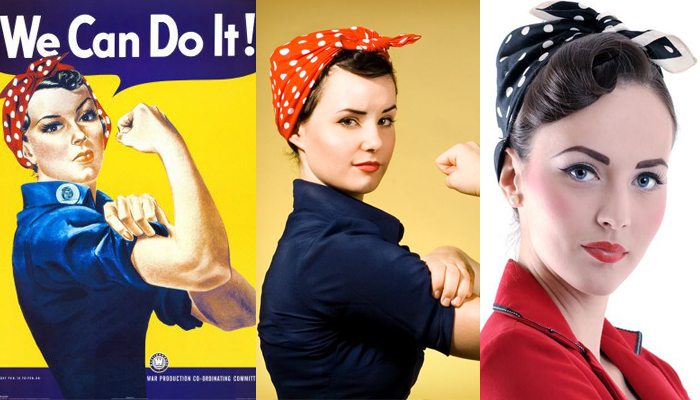
Rosie the Riveter is actually a wartime icon, representing the toughness and independence of women who took to the factories during the second world war. However, the bandana that she used to pull back her hair on the job remained a fashion staple. A bandana is more than practical. It can be decorative, as well, whether you choose a bold pattern or a delicate one.
Tools, Techniques, Tips, and Tricks
It looks amazing, but how do I do it? It’s easier than you might think. The 1950s brought us a few tools and techniques that we still use today. They’re easy, fun, and readily available.
Teasing
“Teasing” or “ratting” hair means purposely tangling sections of it with a comb. This makes a bump or a “rat,” which gives a style lift. Typically, people tease the hair at the crown of the head, then brush hair over it to create a smooth appearance. Some have used this technique in creating beehives, bouffants, and other “big hair” styles. You can use a special “teasing comb,” or an ordinary fine-toothed comb. Adding hairspray gives stiffness and hold.
Hair Rat
Alternately, if you don’t want to tangle your hair, you can also use a bumper or a hair rat to create similar effects. This is an inexpensive tool that you can buy at most drug stores, or even make yourself out of fabric or netting. They come in different shapes and sizes for different uses. Experiment to see which works best for you. Hair rats are also used for creating buns, Gibson rolls, and other styles.
Backcombing
Many of the “high hair” styles divide the hair into front, middle, and back sections. The middle section gives the style its height, either through teasing or by using a device like a hair rat. The front section is combed back over the high part, and the back section is either tucked, styled, or left to hang free. Backcombing gives a high style a smooth, more natural appearance.
Pin curls
Pin curls are similar to Victory rolls, in that no rollers, bumpers, or other equipment are necessary, save for pins — and possibly gel to set it. To form pin curls, first, apply your setting product. Then use your fingers to create tight curls. Finally, pin those curls into place. In the 1950s, women typically curled their hair before going to bed, then took the pins out and styled in the morning. This is a terrific way to add volume and interest to short hair.
This video can give you more information

